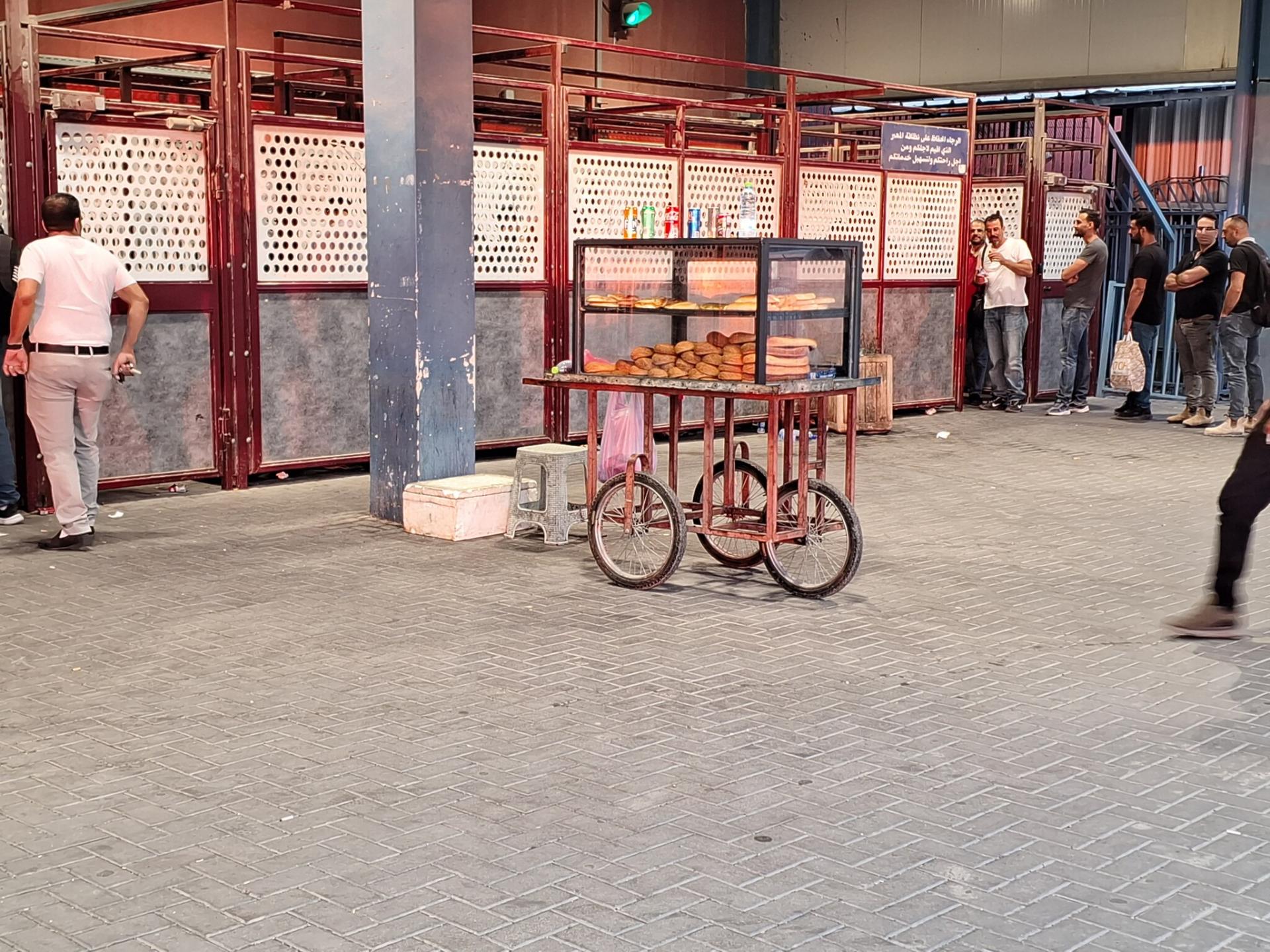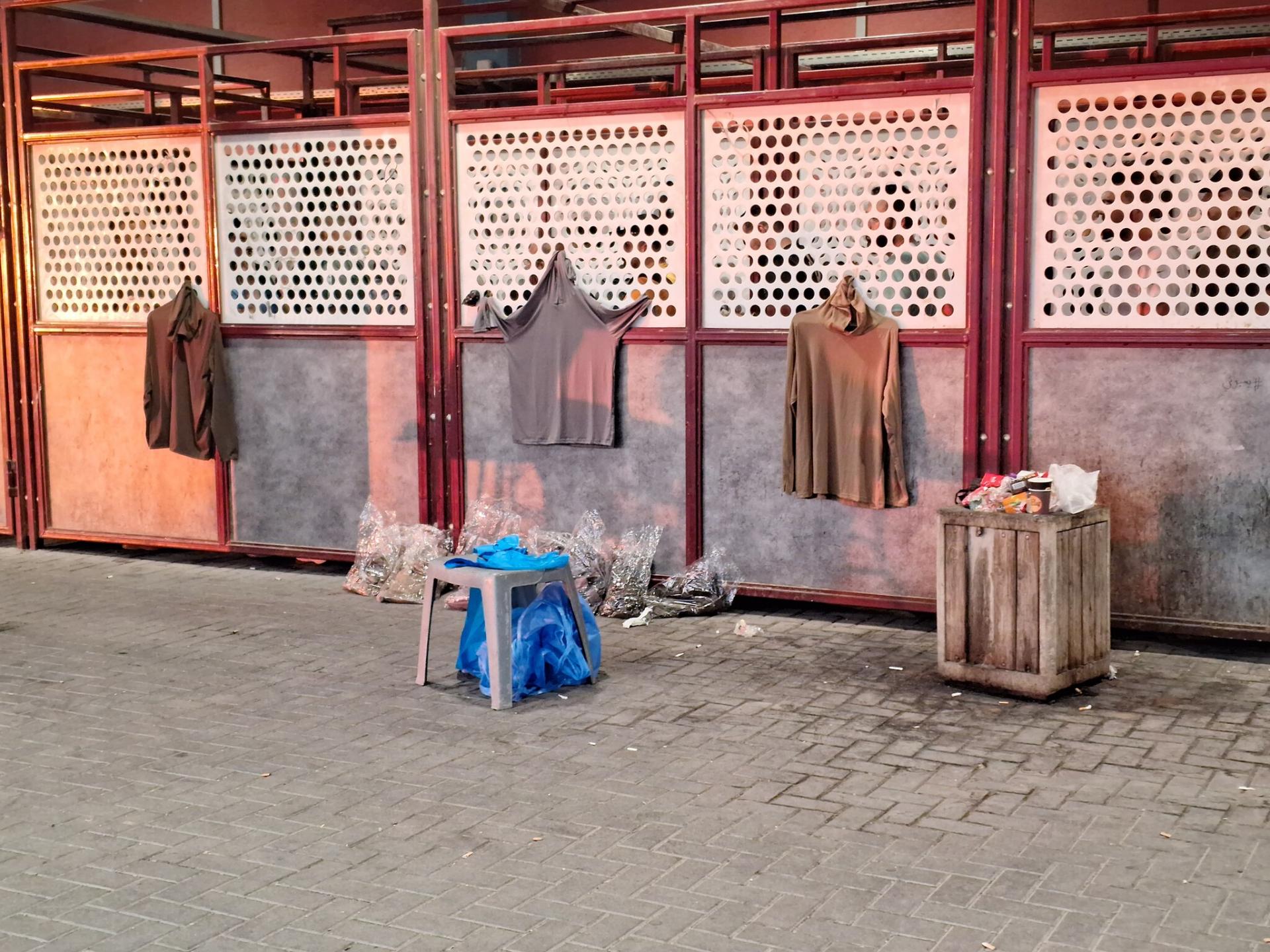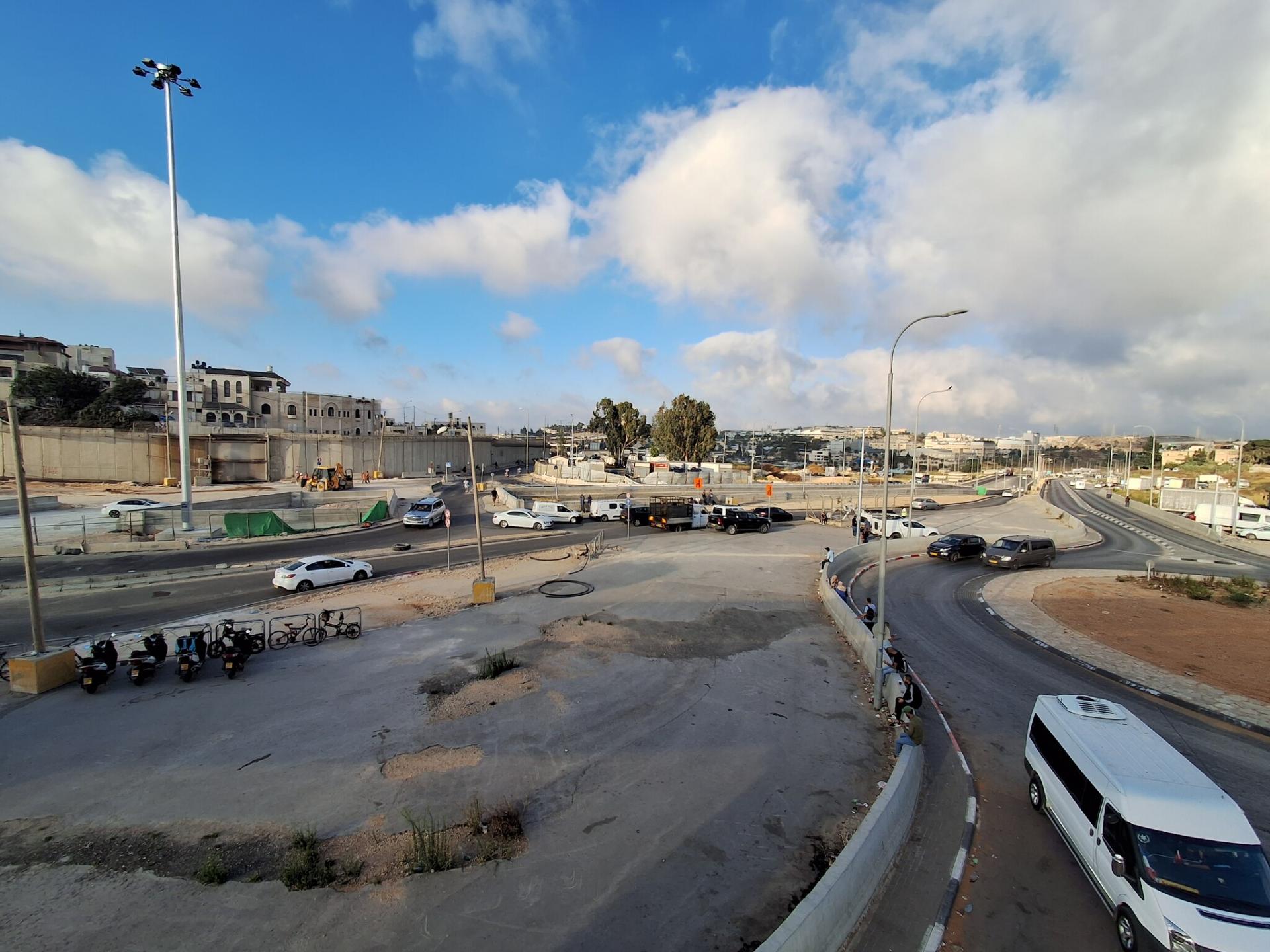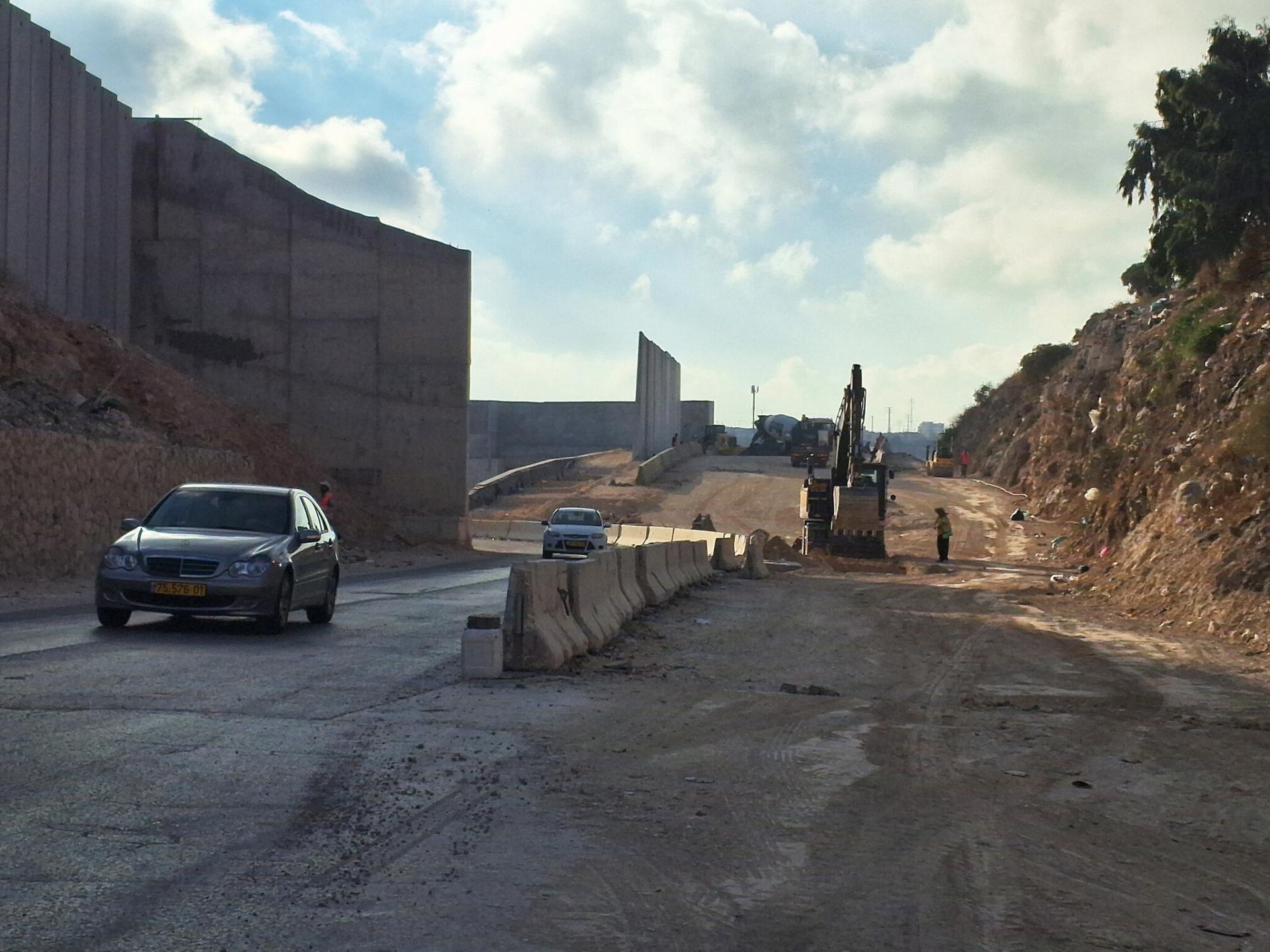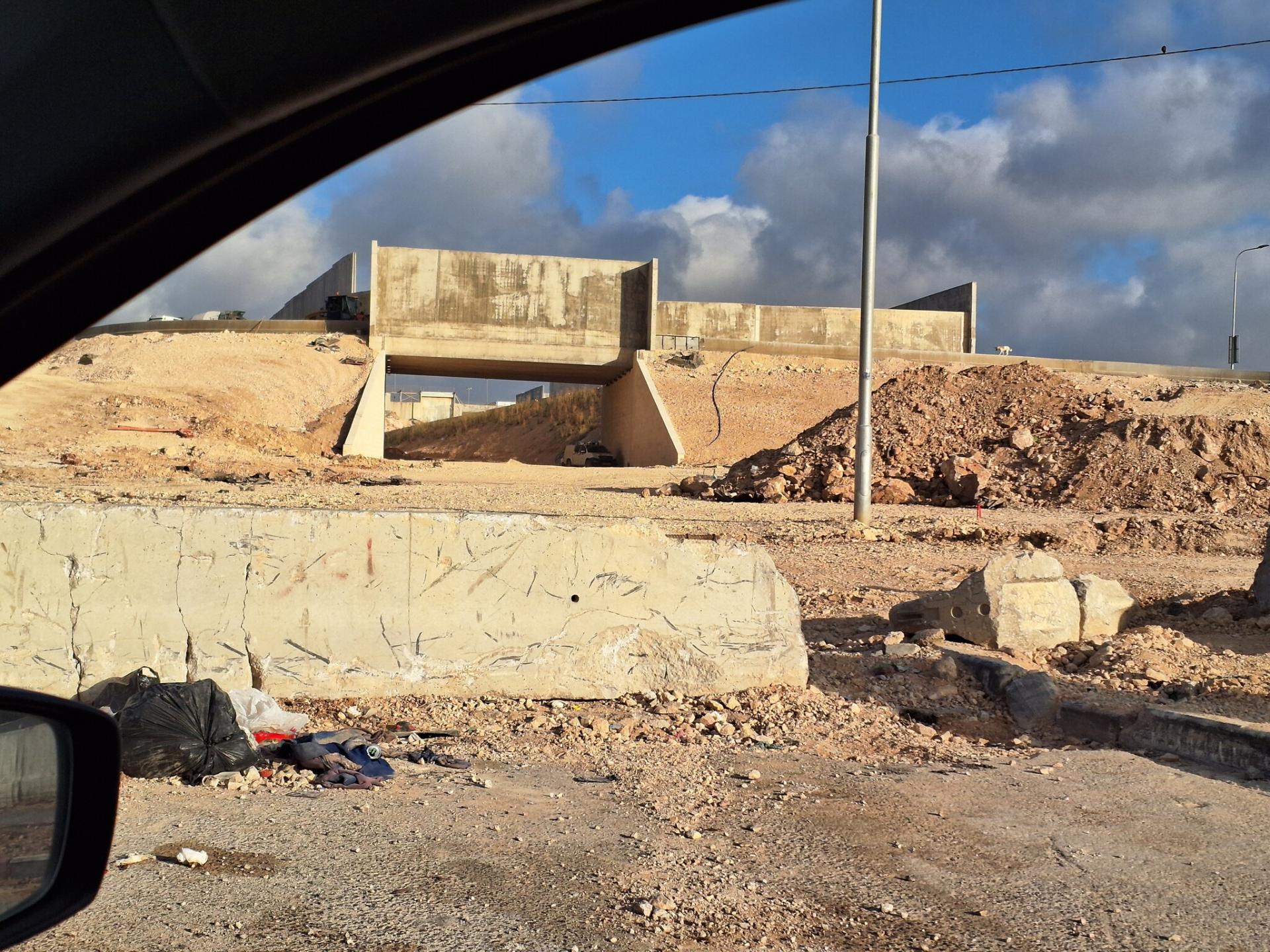Qalandiya
A 'reasonable' morning at the Qalandiya checkpoint.
We arrived at about a quarter to six. Unusually, they stopped us at the car checkpoint and asked what we were doing here. But when we said that we were from MachsomWatch and were going to the checkpoint, the policeman nodded his head and the boom was lifted. We passed and parked in the private parking lot on the Palestinian side. After a break of about a month and a half since the last time we met him (because it was Eid al adha and he didn't come), we were happy to see our friend Abu Ramzi, the pretzel seller. Also the stand for selling falafel and various foods, is now operating from a commercial vehicle. Another kiosk was opened in front of him, this in addition to the regular kiosk that stands closer to the entrance to the checkpoint complex. Later, when we walked towards the checkpoint, we saw that there, under the shed, was a boy with a food cart - selling pretzels, other pastries and drinks. [Altogether lot of competition for the pitifully small sales.] His friend, who looked older than him, was selling shirts. They joined the cake seller who has been located here for some time and the stall for selling phone cards and charging RavKav cards.
The phenomenon of selling various goods as well as fruits and vegetables around the checkpoint is very common, but usually takes place in the later hours, when the workers return home from their work in Israel. Nevertheless, we saw that there were a few who also bought shirts on the way to work.
There were few queues at the checkpoint just before six. As we got closer we saw the "tails of the queues" shorten and disappear into the slalom passages. But since this is rush hour, new queues quickly formed and got longer and longer. For a moment it seemed that there would even be a collapse of the queues when the left queue started moving forward and people ran to it from the two adjacent queues. Fortunately, this did not happen and usually the queues were orderly.
As far as we were able to find out here, there was no problem of a complete closure of the checkpoint as happened several times recently at checkpoint 300 (Bethlehem), probably due to a computer malfunction. At the same time, people complained that almost every day there are long queues, often much longer than what we saw today. By 6:20-6:30 there were no more queues and they didn't build up again. It seems that it is only at this stage that the soldiers on duty are being increased and more checkpoints are being opened, while this should be done as early as five or five-thirty to meet the needs. The checkpoint allows the operation of 6 such positions, but apparently not all of them work in the early hours.
of the checkpoint as happened several times recently at checkpoint 300 (Bethlehem), probably due to a computer malfunction. At the same time, people complained that almost every day there are long queues, often much longer than what we saw today. By 6:20-6:30 there were no more queues and they didn't build up again. It seems that it is only at this stage that the soldiers on duty are being increased and more checkpoints are being opened, while this should be done as early as five or five-thirty to meet the needs. The checkpoint allows the operation of 6 such positions, but apparently not all of them work in the early hours.
Later, when we happily met S., a friend we hadn't seen in a long time, we told her about the queues that were here before she came.
Towards 7.00 I entered the checkpoint from the middle entrance. Each of the three entrances leads to a waiting area (described below} from which one goes through a turnstile into the main hall. Inside there was a short queue in front of the two baggage checking stations, both of which were operating. 5 people are admitted each time, and after they pass through the magnetometer and their belongings through the luggage-checking machine, the carousel opens to the document- checking stations (most of them electronic) and then 5 more people are admitted. The doors connecting the right and left sides of the waiting area were locked, so I couldn't see what was going on there. From the left, a call was heard towards the soldier, who was probably delayed in opening the turnstile. The transition took me about 5 minutes, including manual document checking. After that I went up on the pedestrian bridge to see and photograph the state of the works.
I returned to the Palestinian side of the checkpoint and we got into the car. On the way back we stopped to photograph the works from the east side. The wall you see here is the other side of the wall in the pictures above. Then we returned, moved a little further to the east and photographed from the other direction (from east to west) what looks like an entrance to the future underpass area.
We continued through A-Ram towards Hizma. The Jib barrier was unmanned and traffic flowed more or less without delays. Because of the summer break , even at the Hizma checkpoint, the traffic situation was reasonable on our way back to the city center.

